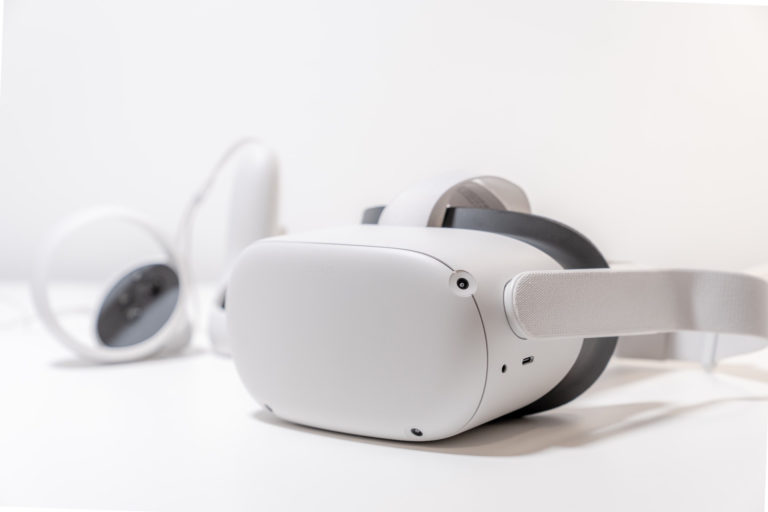
In the book Ready Player One, teen protagonist Wade Watts lives in a world where everyone spends most of their time in an expansive virtual world called the Oasis. It has become the ultimate dream of many a VR enthusiast and developer.
However, VR can’t attract a universal audience today. This technology can’t fulfill its potential until inventors solve one significant barrier to adoption — accessibility.
The Many Barriers in VR Today
VR headsets have slowly been building a following over the past decade. Developers release more and more apps, games and features every year. In fact, there are even emerging use cases for XR in the workplace, such as for VR meetings or an immersive office setup.
However, developers continue to create headsets and control systems that are only functional for people with perfect vision, hearing and range of motion, no chronic pain and other physical limitations. Let’s take a look at just a few of those accessibility factors…
Vision
If VR, AR and MR were more accessible, millions more people could use these technologies. Developers need to keep in mind that most users are not physically perfect. For example, an estimated 75% of American adults need corrective prescription eyewear, whether that is contacts or glasses.
Yet, none of the leading VR headsets in 2022 have the option to purchase them with corrective lens inserts. Users have to go to third-party sellers and hope their headset is popular enough to even have aftermarket corrective lenses available.
Hearing
The developers of the popular VR game Moss made headlines when they announced in 2017 that they were creating in-game sign language for NPC characters. This is a step in the right direction, but far from common. People with limited or no hearing have serious difficulties using many XR apps and games because the programs rely on hearing for functionality. Even where subtitles are available, they may be too small to read.
Range of Motion
Even people with perfect vision and hearing sometimes can’t use extended reality apps and equipment for a very serious reason — a limited range of motion. Many apps — particularly games — require broad movements and gestures, such as stepping, swinging one’s arm or turning around. Even VR controllers themselves can be prohibitively difficult to use for some people.
Those with conditions like muscular dystrophy have complained for years that VR apps and gear design are virtually impossible for them to use. This issue impacts people with a vast array of conditions, ranging from chronic pain to autism to cerebral palsy. Very few games and apps offer accessibility features for stationary play.
VR’s Most Important Forgotten Audience
No matter how significant, people with any type of disability deserve inclusion in the world of XR technology. This large community of people is VR’s most important audience in many ways. Many see VR as a way to escape the world in a fully immersive way and have a rewarding experience in a virtual world.
People with disabilities have much to gain from such an experience. Maybe they have lost their motor skills in real life, but they can be a warrior, climb a mountain or go to space in virtual reality. The potential for XR technologies to do good for people with disabilities is enormous. For example, extensive research shows VR can be a valuable tool for therapy, including for people suffering from PTSD.
One often-forgotten niche in this audience is seniors. Older adults may suffer from multiple conditions that keep them from using XR, including a limited range of motion. Yet, if these technologies were accessible to them, it could help improve their mental health and even allow them more accessible homes so they can age in place — which could prove vital to overall happiness, as 90% of seniors want to stay in their own homes as they age. Seniors could visit bucket-list destinations or even go on multiplayer adventures with grandkids and family members, free of physical limitations.
The Positive Impact of Accessible XR
What could be the positive impact if XR technologies were more universally accessible? There are incredible benefits for older adults and people in need of therapy. These are only the beginning, though.
A familiar problem people with limited mobility face is a lack of independence. It can be near impossible for them to work a regular job or leave the house without help. Inclusive XR could completely revolutionize this.
There are already organizations trying to make work more accessible to people with disabilities, such as a café in Tokyo where the employees are people with disabilities who remotely control robot avatars. With inclusive XR, people with differing ability levels could have an immersive and realistic workplace experience through a robot or virtual office space. This could be incredibly beneficial for mental and physical wellness.
Similarly, extended reality could transform socialization for people with disabilities. Inclusive XR could allow disabled people to play games and travel together in virtual worlds designed uniquely for them, even from different parts of the world. They wouldn’t have to rely on a caregiver to visit a friend or worry about wheelchair access while visiting another country.
Developers have a crucial role to play in the transformation of XR. They need to consider accessibility features if they want this technology to take off. They can start by including features like ASL, speech-to-text, adjusted UI and text, and options for stationary play. Equipment needs to evolve as well, especially controllers. Developers should consider inviting people with disabilities to the design process to help them find a controller solution that works for everyone.
A More Inclusive Future
VR, AR and MR are technologies that will be hallmarks of the future. XR becomes more popular, affordable and varied every year. However, accessibility features keep getting left behind — even though they have immense potential to change lives worldwide.
Inclusive extended reality could help millions of people experience new things, work from home, socialize, get therapy and enjoy the same opportunities as everyone else. VR, AR and MR are not the future — inclusive technology is.
 April Miller is a senior writer at ReHack Magazine and editorial contributor at AR Insider. She specializes in VR/AR, IoT, and business technology. See her work here and follow her @rehackmagazine.
April Miller is a senior writer at ReHack Magazine and editorial contributor at AR Insider. She specializes in VR/AR, IoT, and business technology. See her work here and follow her @rehackmagazine.
Header image credit: Vinicius Amnx Amano on Unsplash






